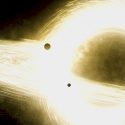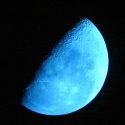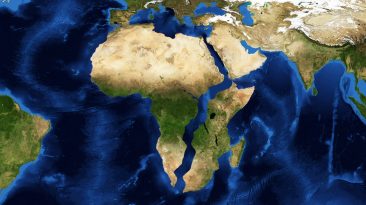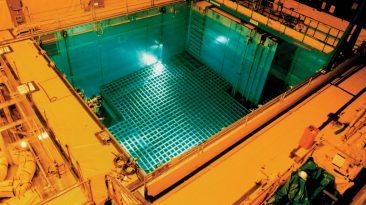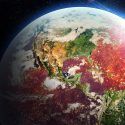What if Jupiter gained just a little bit more mass during its formation period, and then ignited to become a star?
How different would our Solar System have turned out? Would having another star in the middle of the Solar System mess with the orbits of the planets?
How much heat would it send towards Earth? Would we see it from here?
Jupiter has more than twice the mass of all the planets in the Solar System combined. It doesn’t have a solid ground and is made up of the same elements as the Sun. And yet, it’s not a star.
Jupiter doesn’t have enough mass to initiate a fusion reaction in its core – the necessary requirement to be accepted into the star club. Even if all the planets in the Solar System collided with the gas giant, Jupiter would still lack in mass to push it to stellar status.
If only we could find 79 more Jupiters and crash them all into the one we have now, we’d be able to build a second star in the Solar System. What would that be like?
80 Jupiters crushed together would make a star out of the gas giant. But that star would be nothing like the Sun.
Even though Jupiter the star would be a lot more massive than Jupiter the gas giant, it would only be about 20% bigger in diameter. The extra mass would just make it a lot denser.
Jupiter would be massive enough to become a red dwarf – a small, cool, hydrogen-burning star. As every red dwarf out there, it wouldn’t be too bright. 0.3% of the Sun’s luminosity is the most light that Jupiter could hope to spit out.
[dx_custom_adunit desktop_id=”RTK_CDE4″ mobile_id=”RTK_SUFd”]Because Jupiter is four times further away from us than the Sun, 588 million kilometers away, the Earth wouldn’t get much heat from it. By and large, Jupiter turning into a red dwarf wouldn’t change anything for life on Earth.
But you’d still see it from Earth. A Jupiter-star would appear red and a bit brighter than the Moon at its full phase.
Would it at least have a gravitational impact on the Solar System? Not as much as you might think. The former gas giant would slightly shift the orbits of the other planets, even the Sun. But not enough to set them on a collision course with one another, or launch them out of their orbits into outer space.
The only threat we’d face would be space rocks from the asteroid belt that Jupiter might send towards the Earth. We’d need to learn to detect and destroy them before they could reach our planet.
Other than that, not much would change for the Solar System. Things would get a lot more fun if Jupiter was replaced with a Sun-like star.
If our gas giant became 1,000 times more massive, the Solar System would go wild. Asteroids would crash into planets, and planets would change their orbital course. Some of them might end up ejected from the Solar System altogether.
It’s hard to predict what would happen to Earth in this gravitational mess. From being pulled a little too close to Jupiter-star and getting scorched, to being left drifting alone in the void of space. In any case, it wouldn’t be pretty.
In the real world, Jupiter is forever destined to be a planet. And that’s for the best.
Subscribe to What-If on Youtube or follow the show on Facebook Watch.
Sources
- “What Is Jupiter?”. 2018. NASA. Accessed December 23 2018.
- “What Would The Effects Be On Earth If Jupiter Was Turned Into A Star?”. Astronomy Stack Exchange. Accessed December 23 2018.
- “Q: How Close Is Jupiter To Being A Star? What Would Happen To Us If It Were?”. 2011. Ask A Mathematician / Ask A Physicist. Accessed December 23 2018.






